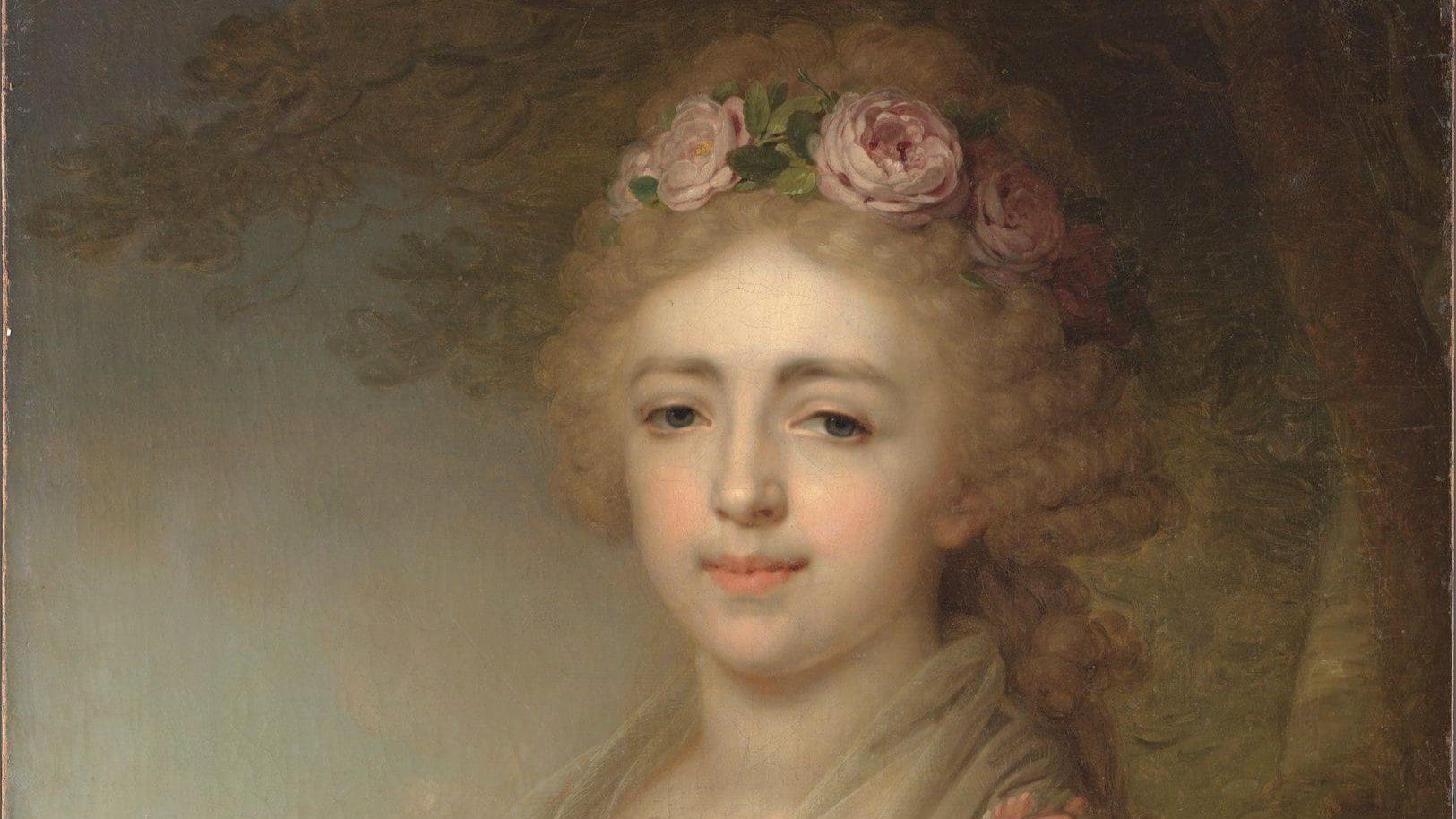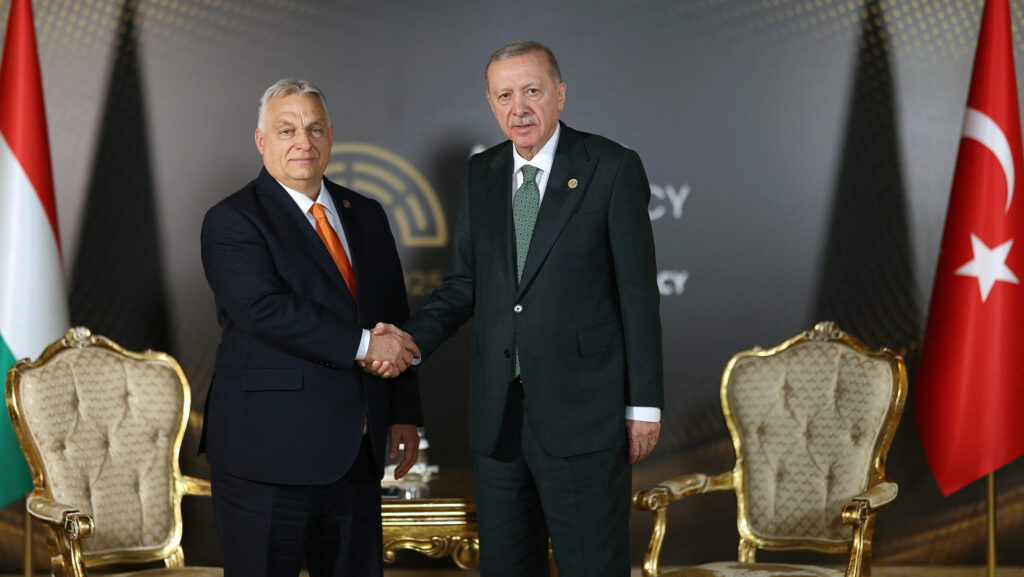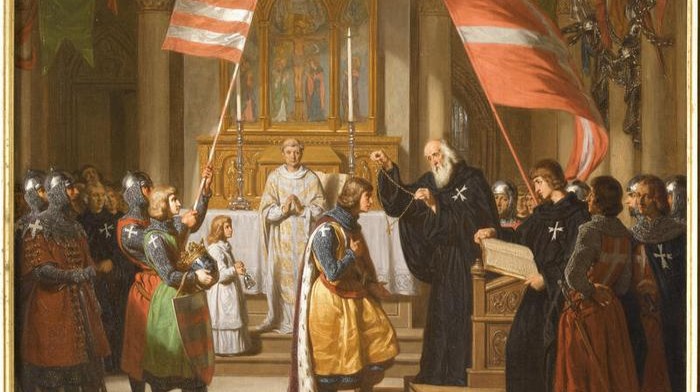Grand Duchess Alexandra Pavlovna of Russia (9 August 1783–16 March 1801) was the eldest daughter of Paul I of Russia (1796–1801). Until 1796, it looked as thought she would marry the then 18-year-old Swedish King Gustav IV Adolf. In that year, however, the Swedes withdrew from the marriage agreement as the Grand Duchess’ father was most strict about his daughter keeping her Orthodox faith—against Swedish desires. Due to the breakdown of the marriage negotiations with Sweden, the Russian royal family looked for other political ties to strengthen through their daughter’s marriage. Among Western European ruling dynasties the French threat marked by Napoleon’s advances was leading to growing concerns, and the Habsburg dynasty was also looking for allies to fend off the French.
Sealing the alliance with Russia, Grand Duchess Alexandra Pavlovna married the 23-year-old Archduke Joseph of Austria, the Palatine of Hungary, at a very young age. Despite the Habsburgs also expressing their hope of having the Duchess convert to Catholicism, eventually a consensus was reached and the couple had both an Orthodox and a Catholic wedding ceremony, and
Alexandra Pavlovna could keep her Orthodox faith.
After their wedding, Alexandra Pavlovna and Joseph set out on a long honeymoon that lasted for two months, travelling from Russia to Vienna and then to Budapest. It is believed that despite the fact that theirs was an arranged marriage dictated by political will, during the long trip the young couple did find love and spent their days in great harmony.
The Grand Duchess arrived in Hungary with a magnificent dowry. She had 29 large pieces of jewels decorated with brilliants, dozens of pieces of jewellery ornated with rubies and pearls, as well as silver trays, gold platters and cutlery made of precious metals. Her wardrobe also included some Hungarian dresses that she was very fond of—she usually appeared in public in Hungarian-style clothes that were inspired by folk motives. Her wedding dress was also in a Hungarian style, with historical records saying that it even inspired a short-lived fashion trend at the time among the Russian royals.
Alexandra Pavlovna became popular almost immediately after her arrival in Hungary. She was a naturally charitable person, eager to speak with the locals even if they were from a modest background. The beautiful young royal was celebrated by nobles and commoners alike. Her memory is dear to Hungarians even today as according to legend,
it was her idea to include the colour green in the Hungarian flag.
For centuries Hungarians had been using red and white (originally, silver) as their national colours, but to follow the style of the French tricolour, a third colour was proposed to be added to the flag. Legends says that Alexandra Pavlovna came up with the idea of selecting green as the last stripe of the Hungarian flag. The colour reminded her of Hungary, and was meant to symbolise hope next to the red that symbolises strength and the white that is a symbol of loyalty.
The new tricolour flag slowly started gaining ground in Hungary and by the mid-1800s, that is, half a century after Alexandra Pavlovna’s death, it became widespread.
Due to her love and dedication to Hungary, Alexandra Pavlovna became known as the ‘Queen of Hungarians’—wearing this title (albeit unofficially) much sooner than Empress Elisabeth of Austria. But unfortunately she did so for a much shorter period than Sissy did. Less than two years after arriving in Hungary, the Duchess died. In March 1801 she gave birth to a daughter who tragically died only a couple of hours later. Within a week, Alexandra Pavlovna’s health took a turn for the worse, too. She succumbed to puerperal fever at the tender age of 17 on 16 March 1801 in Buda. Her death was mourned in a touching poem by Mihály Csokonai Vitéz, considered to be one of the greatest Hungarian poets of the Enlightenment.
Soon after her death, her husband, Archduke Joseph, who did not marry for over a decade after Alexandra Pavlovna’s death, had an Orthodox crypt built for his late wife in the Hungarian town of Üröm. Üröm was selected as her final resting place both because she liked hiking in the area and also because her husband owned lands there. The tomb was inaugurated by the Orthodox metropolitan in Hungary. The site is a popular orthodox pilgrimage place even today, with the Hungarian Russian Orthodox community still having services there.
While the tomb was left virtually undistributed during three revolutions and two world wars, on 26 April 1981
the crypt was vandalised and looted.
The Duchess’ arms were broken off, and jewels and clothes were taken off her and stolen. The group of five young man who committed this atrocious act were soon found by the police. Two of the five were known to be collecting corpses and admitted that they wanted to take Alexandra Pavlovna’s head, but they did not manage to detach it from her body. During the investigation all stolen items and the Duchess’ remains were found, which were then taken to the Buda Castle to the palatine’s crypt.
From 1981 until as long as the early 2000s, Alexandra Pavlovna’s remains were kept in the crypt of Archduke Joseph, and her mausoleum fell prey to decay. Decades later, thanks to the residents of Üröm and some businessmen and priests from Saint Petersburg, it was renovated, and on 11 September 2004, in the presence of members of the Habsburg and Romanov families, the Duchess’ remains were reburied in their original resting place, in accordance with her will.








